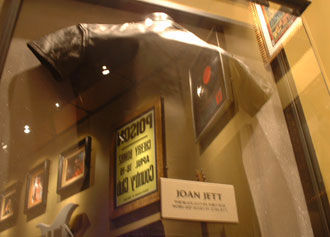 | |
| { Pittsburgh's Hard Rock Cafe as a Sign of Something New } David C. Madden
A History, Developing to a Present-Day Argument or Problem The Present-Day Problem, Not Really an Argument
And it's here that things get tricky, because it's clear that Pittsburgh is not a tourism-driven city—unlike those towns to which the Hard Rock Cafe first expanded—and as such, our Hard Rock isn't trying too hard to attract and delight tourists. Can you blame it? Who in their right tourism minds would be interested in checking out the Pittsburgh Hard Rock? This question was at the center of my feelings of sadness and regret when I heard the news of a Hard Rock opening in Station Square. Housing a Hard Rock Cafe may have once been a prerequisite for all major American cities, but this no longer applied come 1995; opening one in Pittsburgh seemed too little too late. Either an Ingenious Solution or the Icing on the Failure Cake Our Cafe, Our Selves | |
 Crossing the Smithfield Street Bridge from Downtown, the neon guitar that adorns the main entrance of Pittsburgh's Hard Rock Cafe looks like an icon. Not something religious. Not even an icon of music, of history, of latter-day-20th-century rock 'n' roll celebration. No. It's something more contemporary and cartoonish, a desktop icon lying in the system tray of the South Side's Microsoft-Windows tableau; double-click for a stroll down music's memory lane. It's a fitting image. Sure, the rest of Bessemer Court—the waterfront showcase of Station Square anchored by the Hard Rock and the choreographed fountains that spit into the air opposite it—throws neon and lights around with a sort of fevered, watch-me-now glee, but the guitar is clearly the glee's centerpiece and prize, shining as a sort of warning that what lies within is not your father's Hard Rock. You're in cartoon territory, now.
Crossing the Smithfield Street Bridge from Downtown, the neon guitar that adorns the main entrance of Pittsburgh's Hard Rock Cafe looks like an icon. Not something religious. Not even an icon of music, of history, of latter-day-20th-century rock 'n' roll celebration. No. It's something more contemporary and cartoonish, a desktop icon lying in the system tray of the South Side's Microsoft-Windows tableau; double-click for a stroll down music's memory lane. It's a fitting image. Sure, the rest of Bessemer Court—the waterfront showcase of Station Square anchored by the Hard Rock and the choreographed fountains that spit into the air opposite it—throws neon and lights around with a sort of fevered, watch-me-now glee, but the guitar is clearly the glee's centerpiece and prize, shining as a sort of warning that what lies within is not your father's Hard Rock. You're in cartoon territory, now.